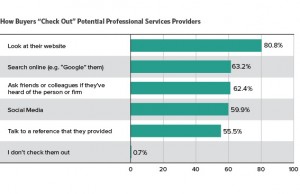In the age of voice search and assistants, columnist Andrew Ruegger discusses how marketers should be adjusting their strategies to stay competitive.

Generation Z and early Generation Alpha will likely be the last of us to type.
Keyboard users are a dying population. Who is the next generation? Voice users. If you spend time with young kids, you’ll notice that they favor voice assistants over keyboards. And who can blame them? People rarely turn down easier ways of doing things!
Marketers need to be thinking about this shift, because voice search will have a significant impact on content discovery through search. Although currently there is no simple or precise way of identifying voice vs. non-voice queries, “Okay Google” queries are becoming far more common in search query reports for our clients, and they’re even showing up as rising terms in Google Trends.
To be successful in this shifting landscape, marketers need to start fine-tuning their strategies across media and content types, including text, image and video.
For website content, it may be in your best interest to have specific natural language pages that come from CRM (customer relationship management) exchanges so that search engines can index them and return more accurate information to consumers based on past conversations. Queries like “best running shoes” will start to fade, and hyper-specific requests tailored to that individual, like “Okay Google, I need a size 10 and a half running shoe with a 5-star rating that’s on sale in-store on Newbury Street,” will start to increase.
For images and videos, traditional SEO factors such as naming, tagging, descriptions, titles, transcripts and where the assets reside will continue to be crucial to help map natural language queries to the best content. So if you’ve optimized toward head terms like “running shoes,” you may want to revisit the core value propositions of your products and work toward always winning on specific and critical points of differentiation.
You can then optimize toward these specific attributes, because it’s unlikely that someone is going to use “Okay Google running shoes” as their voice search query.
What are people actually talking to Google Voice about?
The first step in pivoting your strategy to account for the rise in voice assistants is to understand how people are using them. The good news is that all marketers who run paid search can see all the things people are saying in voice when they receive an ad impression.
You can download the raw data from Google AdWords Search Query Report and filter for “Okay Google.” Technically, I don’t think the activation line “Okay Google” is passed in every time there is a voice query. Also, I think many instances of “Okay Google” queries are from individuals who got a bit impatient and said the activation phrase multiple times, thus logging it.
However, at this time, filtering by the activation line is the only way to clearly identify a voice query from a typed one, although some voice queries are easy to identify when looking at mobile-specific queries.
Overall, it’s clear that a class on “How to Speak to Voice Assistants” would go a long way. Although I’m sure all the voice assistants would love to be your friend, they are simply not there, and there’s a specific way you need to speak to actually get what you want. That fact, however, doesn’t seem to prevent people from attempting to shoot the moon.
Below are examples of real voice queries, and I find them to be hysterical, but also very informative. If you invest heavily in paid search, this data can be extremely valuable for many areas of your marketing, including your digital strategy, product development, and brand communication, which brings us to point one:
1. Consumers talk to their assistants like they’re people, not programs
Overly complicated queries with multilayered requests are hard for assistants to answer.
“Okay google go get the number for Ken Gop for me in San Bernardino California and also Dallas please”

Close, but not quite. I don’t think Ken Gop is a real person. I looked into it.
2. Consumers are struggling with the basics of using voice assistants
Consumers specifically struggle when Google Voice is already on and they don’t realize it:
“you know I don’t like asking it it creeps me out, okay google when does tempe marketplace close?”

Not bad, but I doubt Google will give you the closing time if you call it creepy.
To be fair, voice assistants commonly join the conversation without being invited. My favorite moments during work meetings these days are when someone who has placed their phone on the conference table unexpectedly has their voice assistant join in after believing it heard an activation phrase.
3. Consumers who appear to understand voice functionality tend to get specific, sometimes disturbingly specific
“okay google find the closest place my seven year old son can get white skinny jeans”

C’mon brands! Where is the organic content that showcases 7-year-olds’ skinny jeans?
Creating content with as many characteristics and dimensions as possible is going to be important for voice assistants. When I talk to my voice assistant, I’m going to ask for jeans that are 32w 30l, dark, on sale, high ratings — and if you serve me an ad that gives me anything but that, I will leave. I simply don’t have the time to click around. I’m a millennial after all.
4. People get personal and honest with their voice assistant
“Okay Google, I want to get him trashy pajamas for Christmas.” Poor guy.

So, Kohl’s… ouch. Google thinks you have the trashiest Christmas pajamas. But if there are sales to be had, I can’t blame you.
In all seriousness, this highlights an important point for brands, especially as voice integration becomes common everywhere: You don’t want to be discovered for bad things.
For example, when using Alexa to browse Amazon to buy pajamas, I’ll say, “Alexa, I want to see the highest-rated pajamas that are on sale.” In return, I’ll receive a list of 10 pajamas, and they look great.
Then I will ask, “Which of these pajamas has received the greatest drop (or increase) in ratings in the past three months?” I know that Amazon is saturated with ratings from a variety of sources, and something that has a 4.5 average with over 10,000 ratings may be holding onto legacy quality that the company or product is actually failing to maintain.
These are the types of things brands will need to consider in the age of voice search and assistants.
Some opinions expressed in this article may be those of a guest author and not necessarily Marketing Land. Staff authors are listed here.
Marketing Land – Internet Marketing News, Strategies & Tips
(92)
Report Post








